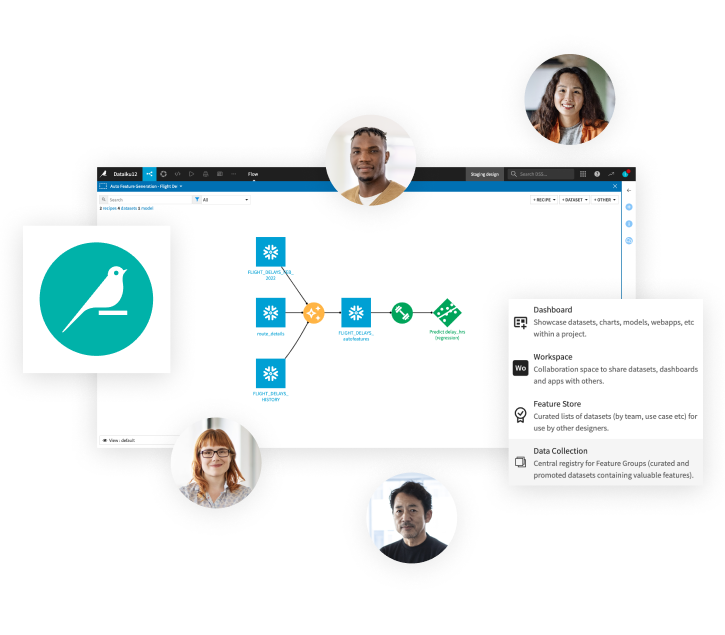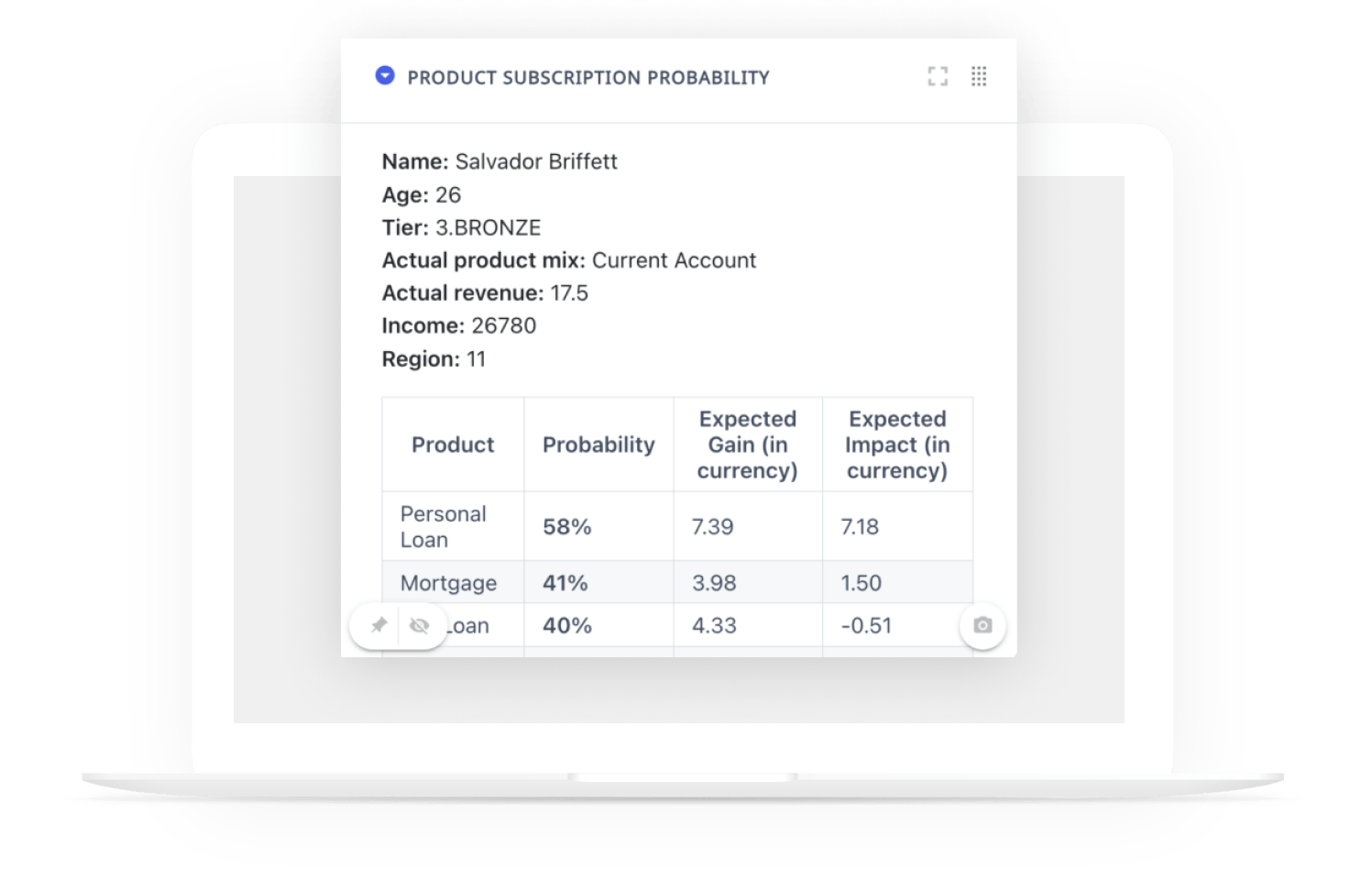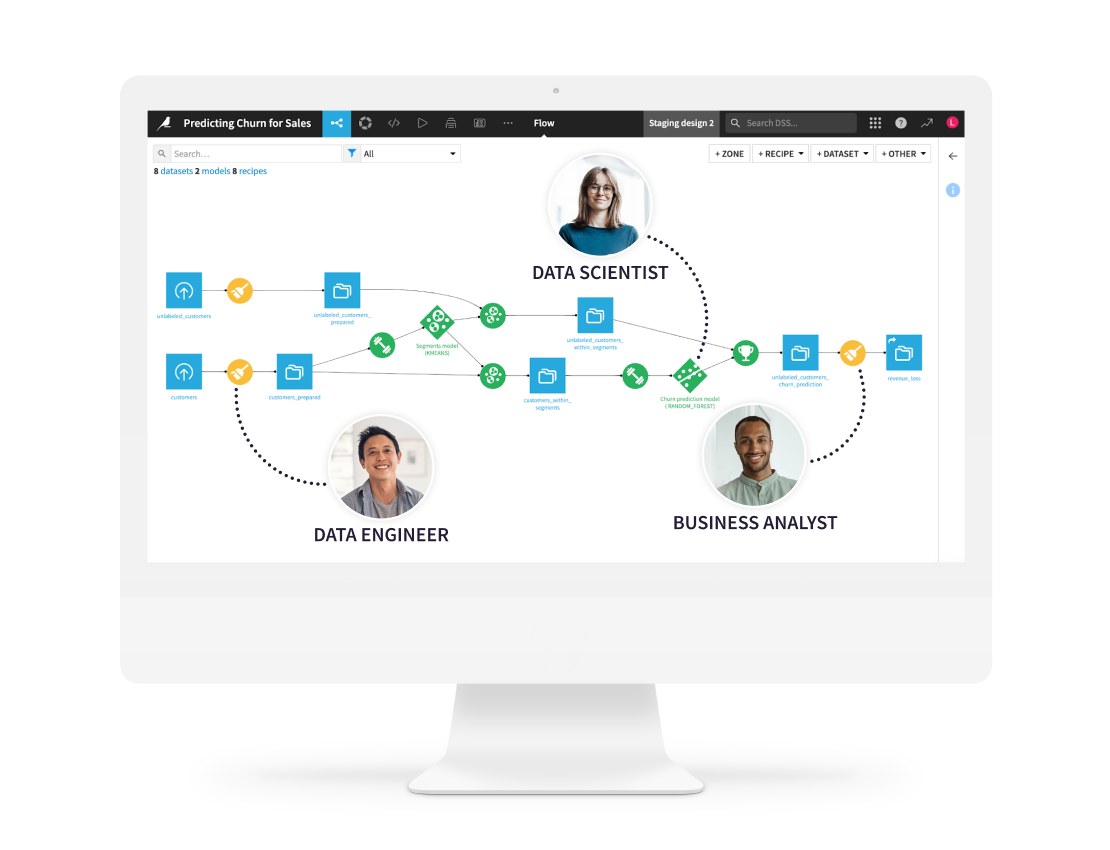A Comprehensive Overview of Data Preparation
What Is Data Preparation in Data Science?
Imagine building a treehouse with a pile of random lumber, bolts, and screws. Before we can build, we need to organize our materials. Similarly, data needs to be prepared before it can be used for analysis, models, and reports. This is even more true when the size of the data is more comparable to a high-rise building than a treehouse project.
It is important to understand the data preparation process, how it is used in data projects, and how improving the process enables data analysts to spend time on higher-value work.
Data preparation is the work done to take raw data and organize it to be analyzed. Whether for analytics, machine learning, or generative AI (GenAI), this process is a critical step that can be difficult and time consuming. Surveys show that over 60% of a data scientist’s job is data preparation, which is a necessary step before the data can be analyzed and be useful for your team.
Data Preparation Steps
What does data preparation involve? The data preparation process looks different depending on a company’s needs. A common process is:
- Gathering: Accessing and blending data from necessary data sources such as databases and manually collected data. This step could include deleting columns or adjusting naming conventions.
- Cleaning: Finding patterns and outliers in the data. If there are duplicates or errors, they are removed or corrected at this step.
- Aggregating: Compiling and summarizing data. This process involves calculations to summarize data that is too granular. Data is grouped in a logical way to reveal traits within the dataset.
- Structuring: Structuring the data to the team’s needs. This step organizes and reshapes the data into a format that is easily accessible and useful for business reporting.
- Exploring: Uncovering characteristics and patterns within the data. Sometimes called data mining, this work helps to determine if our data set can really answer the questions the data project started with.
Historically, companies have done self-service data preparation manually with spreadsheets, with Python, or using other data manipulation tools. When it comes to defining the right tools, self service data preparation definition has to include automated capabilities. For example, GenAI has emerged as a way to speed data prep using natural language to describe data preparation steps. Companies looking for a competitive edge use semi-automated or fully automated data preparation and data analysis tools such as Dataiku.
Why Is Data Preparation Important?
The work of gathering, cleaning, and aggregating enriches and improves the integrity of raw data. This part of the data preparation process allows organizations to trust the analysis performed utilizing well-prepared datasets. Structuring and exploring makes data useful, accessible, and provides early insights about a dataset. This improves analysis work and expands usefulness throughout an organization.
Top 5 Common Data Preparation Mistakes
While there’s no one-size-fits-all strategy to data preparation, a well-defined process can significantly enhance the quality of insights derived from data.
Data preparation is indispensable for accurate analyses and is even more critical for machine learning (ML) and GenAI models that might require text preparation or other advanced use cases. The accuracy and robustness of a model depend on the quality of the training data. Efficient data preparation processes empower analysts to accelerate this crucial step, leaving more time for analysis and insights.
Let’s explore the top five most common mistakes in data preparation and their solutions.
1. Using Spreadsheets to Prepare Large Volumes of Data
Spreadsheets, once a staple in data preparation, have become limiting due to issues like data accuracy, siloed work, security concerns, and human errors. Findings from a Dataiku survey of 375 line of business leaders around the world reveal that, many business leaders want to say goodbye to spreadsheets in the enterprise. This survey found that one in every two business leaders has experienced serious issues with spreadsheets.
Solution: Transition from spreadsheets to an end-to-end platform.
End-to-end platforms like Dataiku, the Universal AI Platform, centralize data preparation, allowing teams to work seamlessly on complex datasets. This transition eliminates silos, enhances transparency, and fosters collaboration. By consolidating efforts in one platform and moving beyond spreadsheets, organizations can achieve enterprise-level data projects efficiently.
2. A Lack of Context of the Use Case
Data democratization is essential for leveraging AI at scale. A lack of context arises from insufficient documentation and storing data in silos across different departments.
Solution: Inclusive Advanced Analytics
Dataiku, the Universal AI Platform, extends AI benefits to all users, promoting inclusive advanced analytics. By providing clear documentation and facilitating collaboration, these platforms address the challenges of context and inconsistency in data usage.
3. Failing to Account for Data Quality Issues
Ignoring data quality issues can lead to flawed ML models and inaccurate business decisions. This is why it’s all the more important to identify and address issues such as missing values, duplicates, and inaccuracies early in the data preparation process.
Solution: The 4 C’s and Predefined Processors
To improve data quality, teams can follow the 4 C’s — Consistency, Conformity, Completeness, and Currency. Dataiku’s library of processors offers tools like Find and Replace, Parse to Standard Date Format, Split Column, and Rename Columns to efficiently handle data quality issues.
4. Preparing (and Re-Preparing) Data Manually
A common challenge teams face in data preparation is that the process is time-consuming, error-prone, and lacks transparency and repeatability. Writing scripts may reduce error, but this solution lacks flexibility and broad organizational use.
Solution: Using Visual Flows and Automated DataOps
Using a visual data flow helps analysts clean and aggregate data while creating visibility across teams, which makes the data preparation process flexible for changing datasets. A visual flow should be readable and accessible by many employees, from analysts to data experts to business SMEs, to ensure easy communication across teams.
Furthermore, automating data preparation with DataOps involves defining automated processes triggered by specific events. This not only saves time but also ensures consistency and repeatability, minimizing human error.
5. Stopping at Data Preparation
Data preparation is just the beginning of any AI project. Failing to move to the next step and engage in data visualization or predictive modeling limits the potential insights derived from clean, structured data.
Solution: Put your data to work with AI data analytics.
Dataiku enables business users to build predictive models or create data visualization dashboards to drive valuable insights. By combining descriptive analytics with predictive analytics such as with data preparation for logistic regression, organizations can make informed decisions based on their data.
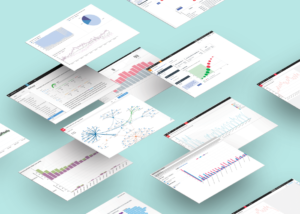
Data preparation and data quality are integral to the data workflow alongside ML and AI (including GenAI). Investing in end-to-end platforms can free up time for high-value work and also instills confidence in data-driven decisions — all of this is then brought one step further with the addition of GenAI.
Goals and Best Practices of Data Preparation With Dataiku
The goal of the data preparation phase of the AI lifecycle is to wrangle and enrich data as input for model building. As we’ve already seen, data prep is key for good machine learning models — the more data that is collected and used for model training, the higher the model’s accuracy. By preparing data, both features and labels, in an efficient way, models can perform better, increasing the business value of the output.
Common Data Flow Patterns in the Data Lifecycle
The below data flow patterns are commonly utilized across the enterprise:
- ETL, or Extract Transform Load
- Transform data from source system.
- Prep data with associated schema.
- Data engineers load the data into a data warehouse, which is easily accessible by analysts.
- Extract Load Transform
- Take data from cloud native data stores (i.e., X).
- Stream and load data to a data lake (which can store more data more easily than a warehouse).
- Transform data from the data lake.
Data Stream Processing
A more modern data architecture thinks of data as a stream, as opposed to content being processed in batches.
Further, we know that the output of data work varies by project and use case, but it typically falls into one of these three buckets:
- Data: Here, data is transformed and the output is more data (such as when an analyst sends a clean Excel file to a boss to review).
- Reports: Think of the same analyst, who sends their boss a bar chart of last quarter’s performance.
- Models: Data is used to build algorithmic models to help the organization make future predictions and improve business outcomes.
- Agents: Metrics and models can also be deployed as part of AI agents to leverage the latest cutting-edge technology to proactively act on insights and drive outcomes in real-time. For example, AI agents can use metrics to track performance and make decisions. Clean datasets ensure that it works with high-quality, accurate information to carry out tasks with precision.
Now that you have a better understanding of not only the overall meaning and goals of data preparation, you probably want to go ahead and begin experimenting with your own organization’s data. One of the simplest and most effective ways to build your data prep practice is to partner with a company to help with cloud data preparation like Dataiku.
How Dataiku Can Help
Regardless of the data’s underlying storage system (or whether a team is aiming for the output of data, reports, models, or even agents), data preparation in Dataiku is accomplished by running recipes. A Dataiku recipe is a repeatable set of actions to perform on one or more input datasets, resulting in one or more output datasets.
Dataiku helps address data prep pain points associated with:
- Volume of data, as the platform is built for big data (while spreadsheets are limited in their worksheet size, number of worksheets, column width, and number of characters in a single cell).
- Data governance and AI governance, as it offers one centralized place from which all data work happens. Teams can keep documentation of data sources with sensitive or proprietary information, view what data is used for a given project and who “owns” what data, see what has been done on specific project, and track the history of the data such as where it’s being used and where it came from.
- ML, as it puts data prep in the same place that ML happens so projects can be more easily expanded and developed.
- Collaboration, as Dataiku is focused on collaboration within and across teams (so that analysts and non-technical users can work with data on their own, but follow the best practices laid out by data scientists and other data experts in the organization).
- Reuse and automation, so teams can perform the data prep tasks once and reuse recipes to automate data prep, saving time and resources.
In addition, data preparation tools for machine learning like Dataiku can help save you time and effort in the long term with more efficient data prep.
1. Leverage a Visual Flow for Greater Collaboration and Visual Recipes
After providing analysis to business stakeholders or data teams, you’ll often receive questions on how you achieved your results. However, it can be difficult to explain all the different actions you took when wrangling, transforming, and cleansing a dataset while using spreadsheets and other data prep tools. Dataiku generates a visual flow that that shows each step of the data pipeline and can be used to easily explain transformations to stakeholders. This helps them better understand the steps behind your analysis so that they can gain more confidence in the output.
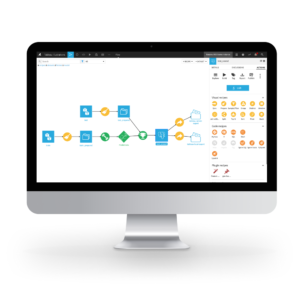
Dataiku offers many visual recipes that can be used to cleanse, blend and prepare data for dashboards and business reporting and make your data transformations easy. Dataiku features 100+ built-in data transformers in the form of visual tools to help you quickly cleanse, join, aggregate, reshape, filter, geocode, and more.
You can also see previews of each transformation before committing to functions. Additionally, each transformation is listed separately and can be grouped and labeled so that you (and others) can gain full visibility into everything that’s occurred. And as a bonus, Dataiku saves time during your data analysis by suggesting functions based on the meaning of your data. To find these, you can hover over the column header to show the suggested options.
You also have the option to write custom formulas in a spreadsheet-like language you’re familiar with and code (using SQL and beyond) for bespoke transformations if needed or desired. Use visual tools for maximum speed or write custom code for maximum flexibility — the choice is up to you.

2. Adopt a Habit of Reuse With Automation
Often you’ll find yourself working on recurring reports for stakeholders which have the same data prep steps each time. In these cases, or when large amounts of data are involved, organizations should automate the task of data preparation to speed up the process and ensure consistency, explainability, and repeatability.
With Dataiku, you can embrace automation with scenarios and automate the bulk of these common reporting tasks.
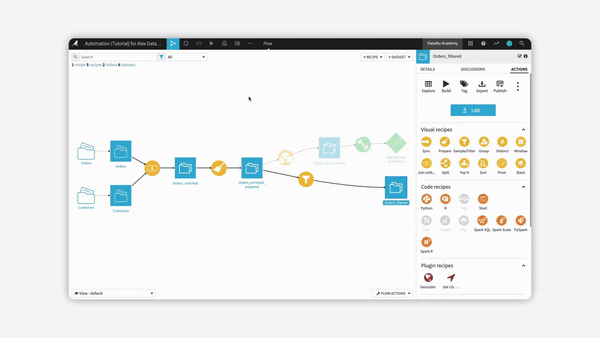
Efficient data preparation is critical for building a successful data science practice. By investing in robust data prep processes, you can help ensure data quality, reliability, and accessibility, effectively building trust into your models. Some of the best data preparation tools from companies like Dataiku can help enhance data preparation efficiency, helping your organization work more effectively. With a well-structured data preparation framework, you can transform your raw data into a valuable asset, helping you achieve strategic goals swiftly and effectively.
In Dataiku, organizations can also automate data preparation by defining a series of steps or actions that will occur each time a defined trigger occurs. Triggers can be time-based, such as a daily run, or depend on other factors such as new data coming into the system or an upstream job finishing.
Scheduled jobs provide a user-friendly way to set up repeated data cleaning processes so that incoming data is cleaned automatically when it arrives into the database. By automating data preparation, business analysts can save time by using and reusing already existing automation processes instead of spending the majority of their time doing data preparation tasks manually, over and over again.
Once an analyst has cleaned and prepped a dataset through automation, not only should that dataset be made available to everyone to reuse, but analysts should also save and share their data preparation automation processes to ensure saving time and efforts and maintaining consistency across analyses and results.
3. Easily Connect to Needed Data Sources With Built-In Data Connectors
Easily access the data you need with dozens of data connectors to cloud storage technologies, on-premises databases, and enterprise applications to get the most out of data preparation software with Dataiku. No matter where it’s pulled from, data is uniformly presented in a familiar tabular view, perfect for analysts accustomed to spreadsheet data preparation tools. See a list of supported connectors here.
4. Benefit From Native Data Visualizations and Statistical Analysis
At any step in your data preparation, leverage 25+ types of built-in charts and visual statistical analyses to quickly explore data and identify patterns, without the need to export data into other tools. Then, easily shift to creating and deploying ML models or creating automated reporting dashboards for stakeholders — all from a single interface.
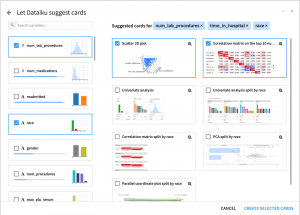
5. Share and Reuse Work to Save Time
Data prep software features in Dataiku like reusable and shareable project assets make it easy to find relevant past work and transfer knowledge. You’re able to copy/paste recipes, package workflows as reusable visual components, and publish curated reference data to a central feature store for augmented data preparation — saving time and building best practices for your team.
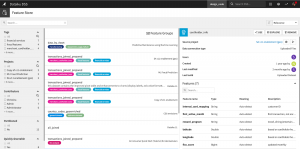
Don’t Be Intimidated by Data Preparation
As we’ve seen, analysts spend a majority of their time on data preparation, and it’s often the most tedious part of analysis. Whether you’re in the camp that loves data prep or would prefer to never have to cleanse another dataset again, Dataiku’s data prep software features were designed to make data prep more efficient.
By addressing common data prep challenges and building in best practices, you and your organization can unlock vast opportunities for both innovation and competitive advantage in the marketplace.
